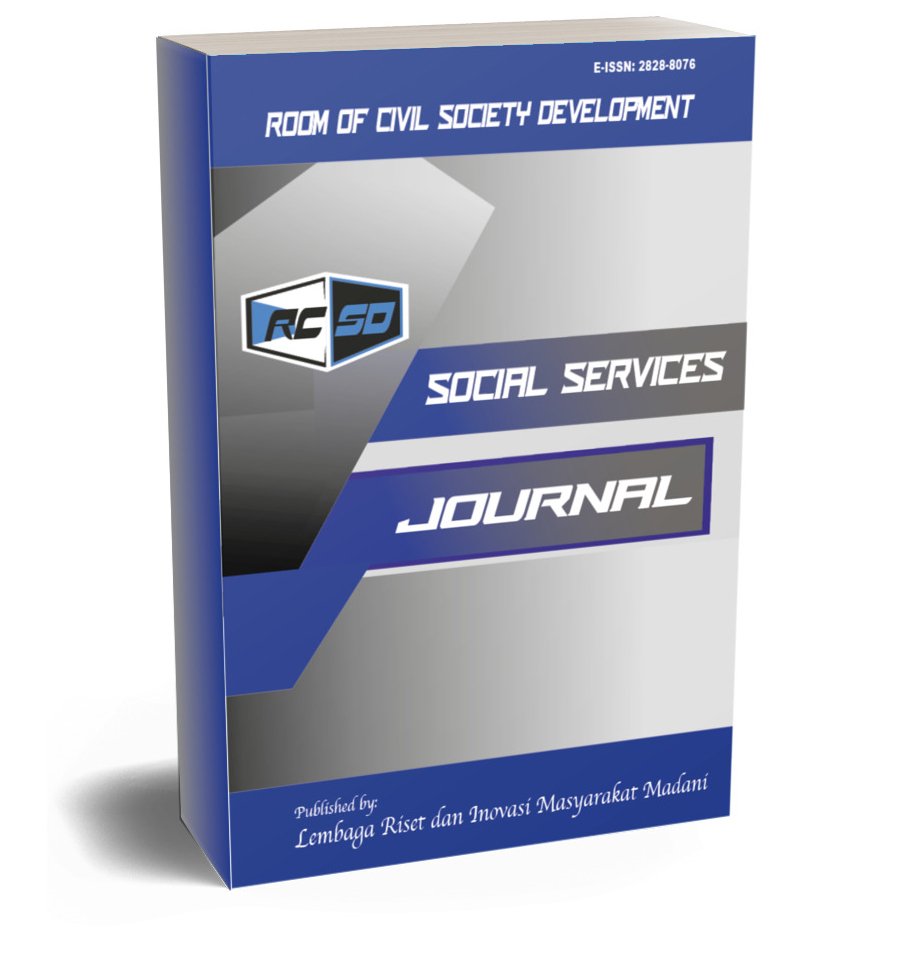Empowering Interior Design Students and Local Communities through Task-Based Language Teaching (TBLT)
https://doi.org/10.59110/rcsd.533
Keywords:
Classroom Action Research, Speaking Comprehension, Task-Based Language TeachingAbstract
This study examines the impact of Task-Based Language Teaching (TBLT) on improving speaking comprehension among 23 interior design students at Institut Desain dan Bisnis Bali (IDB Bali). Using a Classroom Action Research (CAR) approach based on Kemmis and McTaggart’s model, students participated in two learning cycles, where they engaged in online speaking tasks submitted via Google Drive. Speaking performance was evaluated across five key indicators: fluency, pronunciation, vocabulary, grammar, and comprehension. The results indicate a 3.3% improvement in speaking comprehension from Cycle 1 to Cycle 2, with fluency and pronunciation showing the most significant gains. These findings confirm that TBLT, combined with digital submission methods, enhances students' ability to communicate effectively in professional settings. Beyond academic outcomes, this study highlights the potential of TBLT as a tool for community-based training, particularly in supporting local creative industries. By equipping students with effective communication skills, this approach can improve client interactions, business negotiations, and cross-cultural collaborations in interior design and related fields. Future research should explore the long-term impact of TBLT and its integration into industry-driven language training programs.
Downloads
References
Adiantika, H. N., & Purnomo, H. (2018). The implementation of task-based instruction in EFL teaching speaking skill. AISEE Indonesian EFL Journal, 4(2). https://doi.org/10.25134/ieflj.v4i2.1371
Ayagan, Y., Zhekibayeva, B., Analbekova, K., Mukhametzhanova, A., & Zhukenova, G. (2023). Interpersonal communication as an acmeological problem in contemporary education. Power and Education, 16(3), 265–275. https://doi.org/10.1177/17577438231200345
Burns, A. (2010). Doing action research in English language teaching. New York: Routledge.
Guo, S., Liu, J., Nizamuddin, S., Cai, L., & Jurkova, S. (2024). Reclaiming the radical roots of adult education: Toward community-based anti-racism education through participatory action research. New Directions for Adult and Continuing Education. https://doi.org/10.1002/ace.20530
Gürsoy, İ. (2022). Book review: Culture and cultural interaction in foreign/second language teaching edited by Gülnur Aydin. International Journal of Education and Literacy Studies, 10(2), 163–164. https://doi.org/10.7575/aiac.ijels.v.10n.2p.163
Harlina, H., & Yusuf, F. N. (2020). Tantangan belajar bahasa Inggris di sekolah pedesaan. Jurnal Penelitian Pendidikan, 20(3), 325–334. http://dx.doi.org/10.17509/jpp.v20i3.28191
Hasanah, N., & Gunawan, W. (2020). Exploring EFL teachers’ understanding and beliefs in intercultural communicative competence in Indonesian context. Indonesian EFL Journal, 6(2), 121. https://doi.org/10.25134/ieflj.v6i2.3380
Indriani, C., Muth’im, A., & Febriyanti, E. (2024). English language learning through the use of digital technology: A literature review. Linguistic English Education and Art (LEEA) Journal, 7(2), 283–290. https://doi.org/10.31539/leea.v7i2.9268
Lut, K., & Starenkova, H. (2022). The relationship between language, culture, and development of society. Creative Commons Attribution-ShareAlike 4.0, 63–72. http://dx.doi.org/10.25972/WUP-978-3-95826-199-0-63
Mahadi, U. (2021). Komunikasi pendidikan (urgensi komunikasi efektif dalam proses pembelajaran). JOPPAS Journal of Public Policy and Administration Silampari, 2(2), 80–90. https://doi.org/10.31539/joppa.v2i2.2385
Mahajan, R. (2015). The key role of communication skills in the life of professionals. Journal of Humanities and Social Sciences, 20(12), 36–39. https://doi.org/10.9790/0837-201223639
Mamawa, A., Bala, Y., Bobboi, U., & Salihu, B. (2023). Entrepreneurship education and acquisition of requisite skills among students of business management education in Adamawa State Polytechnic, Yola Adamawa State, Nigeria. International Journal of Management Studies and Social Science Research, 5(2), 192–200. https://doi.org/10.56293/ijmsssr.2022.4588
Matthews, M., & Wyk, J. (2018). Exploring a communication curriculum through a focus on social accountability: A case study at a South African medical school. African Journal of Primary Health Care & Family Medicine, 10(1). https://doi.org/10.4102/phcfm.v10i1.1634
Maulidia, M., & Sanjani, M. (2023). Enhancing educational impact: Exploring effective media and public relations techniques in educational institutions. Ar-Rosikhun Jurnal Manajemen Pendidikan Islam, 2(3), 214–225. https://doi.org/10.18860/rosikhun.v2i3.21644
Mulyadi, D., Wijayatiningsih, T. D., Singh, C. K. S., & Prastikawati, E. F. (2021). Effects of technology-enhanced task-based language teaching on learners' listening comprehension and speaking performance. International Journal of Instruction, 14(3). https://eric.ed.gov/?id=EJ1304552
Nambiar, R., Hashim, R., & Yasin, R. (2018). Impact of integrating local culture into language materials on communicative ability of Malaysian lower secondary learners. 3L The Southeast Asian Journal of English Language Studies, 24(4), 13–26. https://doi.org/10.17576/3l-2018-2404-02
Ningsih, S., Sari, M., Jamin, N. S., Sutisna, I., Arif, R. M., Rafi’ola, R. H., & Ibrahim. (2024). Sosialisasi perkembangan sosial emosional anak untuk menghadapi tantangan di lingkungan sekolah. PAUD, 3(3), 107–112. https://doi.org/10.59110/rcsd.352
Nuryadi, M. H., & Widiatmaka, P. (2023). Strengthening civic literacy among students through digital literacy in Society 5.0. Journal of Education and Learning, 17(2), 215–220. https://doi.org/10.11591/edulearn.v17i2.20746
Özcan, K. (2016). Reviewing media and technology usage and attitudes of students of arts and crafts teaching in terms of several variables. International Journal of Curriculum and Instruction, 14(3). https://ijci.net/index.php/IJCI/issue/view/21
Salfitri, H., Rafli, Z., & Dewanti, R. (2020). Improving students’ speaking skills through task-based learning: An action research at the English department. International Journal of Multicultural and Multireligious Understanding (IJMMU, 7(6). http://dx.doi.org/10.18415/ijmmu.v7i6.1647
Saricoban, A., & Karakurt, L. (2016). The use of task-based activities to improve listening and speaking skills in EFL context. Sino-US English Teaching, 13(6). https://10.17265/1539-8072/2016.06.003
Sumaiya, B., Srivastaya, S., Jain, V., & Prakash, V. (2022). The role of effective communication skills in professional life. World Journal of English Language, 12(3). https://10.5430/wjel.v12n3p134
Verheijden, M., Giroldi, E., & Timmerman, A. (2023). Developing skilled communication: The power of self-monitoring. Medical Education, 57(9), 782–784. https://doi.org/10.1111/medu.15170
Wandi, J., Gistituati, N., & Rusdinal, R. (2022). Preparing the community-based education of socio-cultural oriented for children in the industrial revolution era of 4.0. International Journal of Humanities Education and Social Sciences (IJHESS, 2(1). https://doi.org/10.55227/ijhess.v2i1.205
Yahşi, Ö. (2021). Examination of educators' self-efficacy for effective communication. Cypriot Journal of Educational Sciences, 16(2), 451–467. https://doi.org/10.18844/cjes.v16i2.5622
Downloads
Published
How to Cite
Issue
Section
License
Copyright (c) 2025 Agung Krsna Lila Dasa, GDA Wicaksana

This work is licensed under a Creative Commons Attribution-ShareAlike 4.0 International License.















